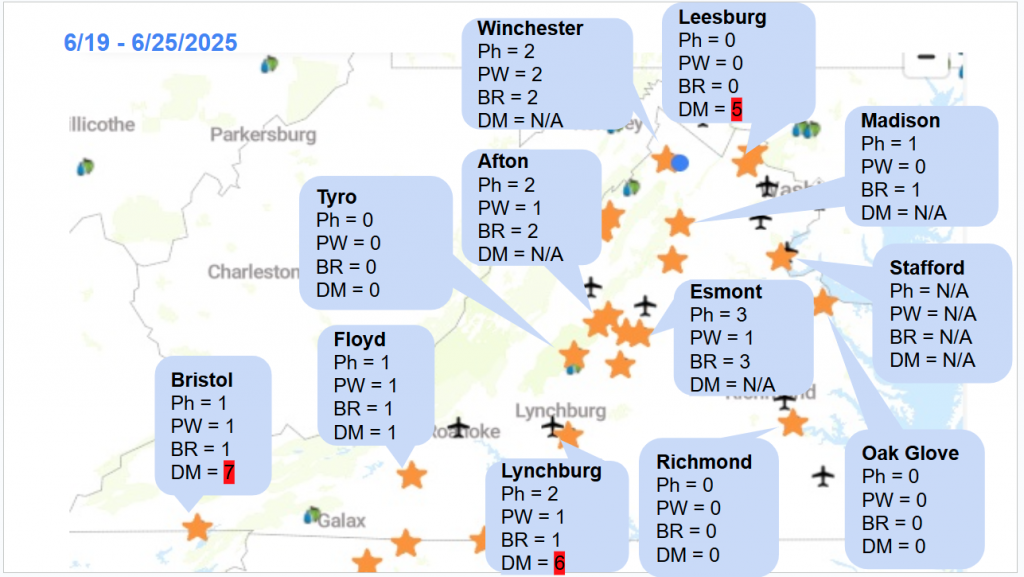
Grape disease risks from the NEWA
Here are snapshots from the last week, showing the number of days with the risk of each disease: Ph = Phomopsis, PW = Powdery mildew, BR = Black rot, and DM = Downy mildew. N/A means there is no data or some issues with the NEWA (which seemed to be more this week. I will report to the NEWA…)
Downy mildew risk forecast
In addition, we generated downy mildew forecasted risk based on the past seven days of weather and an 8-day forecast. Please click the figure below to enlarge. The rains from last week and forecasted rain events pose high-risk events for several locations across Virginia. This effort has been supported by the VA Wine Board and Southern Region Small Fruit Consortium.

Japanese beetle
It is time! Since we had two dry seasons, I am not sure we will see a significant outbreak, but there have been several sightings of Japanese beetles, including one from our experimental vineyards.
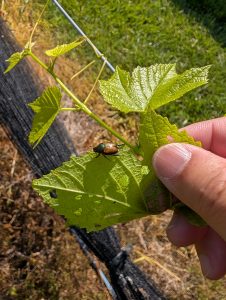
Unless you have baby vines, you should wait until you have enough feeding damage on leaves to spray (Links to VA Fruit Page and Michigan State Univ.). They will come in waves, so, if you spray every time you see them, it will be a lot of sprays. Moreover, they tend to feed on the upper canopy, where you need to hedge anyway. Grapevine can take up to 10% feeding damage until the damage affects fruit quality, which is quite a bit (some studies even suggested 30%, but it depends on training systems, the canopy size, etc).
Poor fruit set
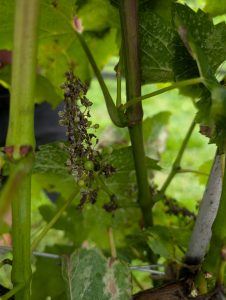
Due to the weather conditions in May, when many early-season white cultivars were blooming, we had several causes of damage to flowers and clusters: downy mildew, botrytis, and physiological damage. Rains were a driver for downy mildew and Botrytis, and rainy, cool conditions do not favor fruit set (links to Univ. Georgia and Penn State). You may not see signs of downy or Botrytis right now since we had several days of hot and dry weather this week.
In addition, we had frost events earlier in April, which damaged many primary buds; thus, we may be dealing with shoots coming from the secondary or even tertiary buds, which were less fruitful than the primary buds. Unfortunately, this has been very common this year.
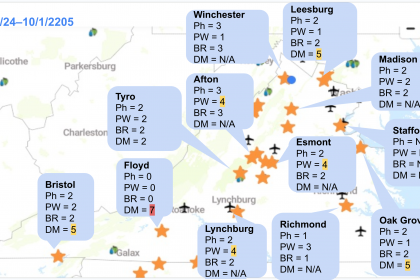


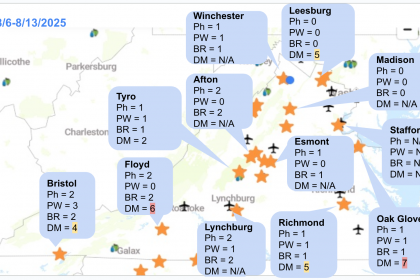
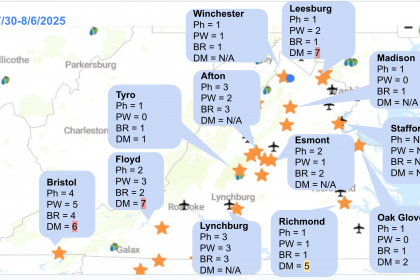

I have black spots on my immature grapes. Is there a suggested treatment?
Located in Nokesville – grapes are muscadine
Hi Jimmie,
I believe the best course of action is to apply a DMI (Rally, tebuconazole, etc) or a SDHI (Luna, Aprovia, etc.) to protect healthy tissues.
Best,
Mizuho